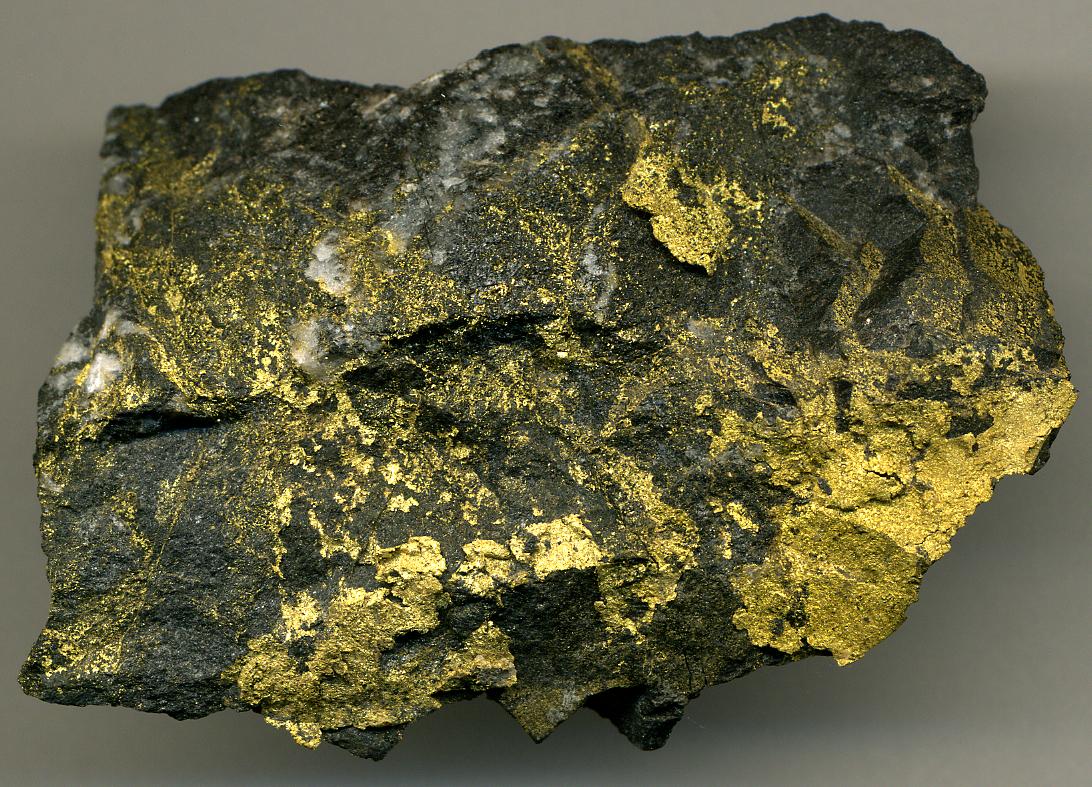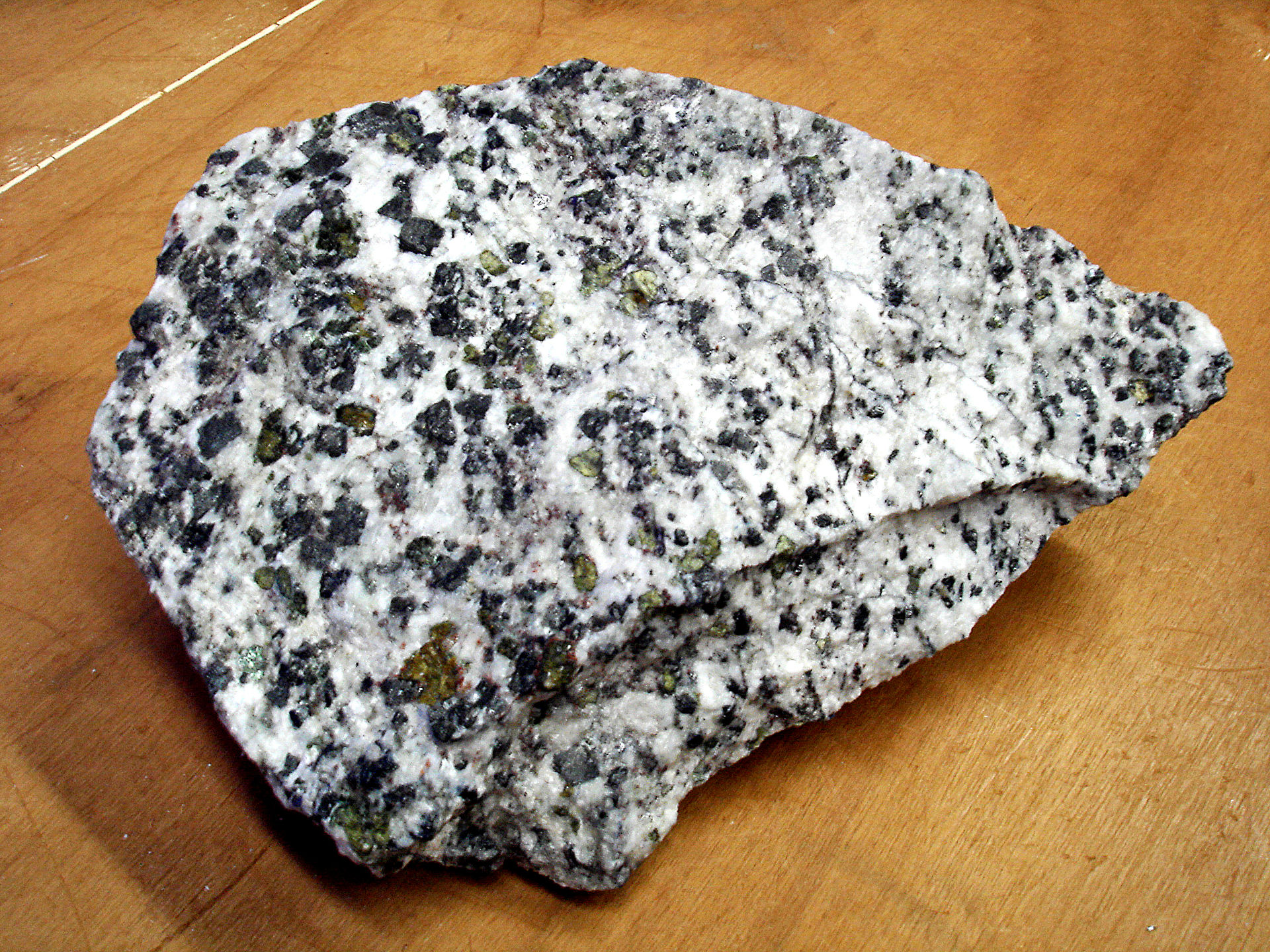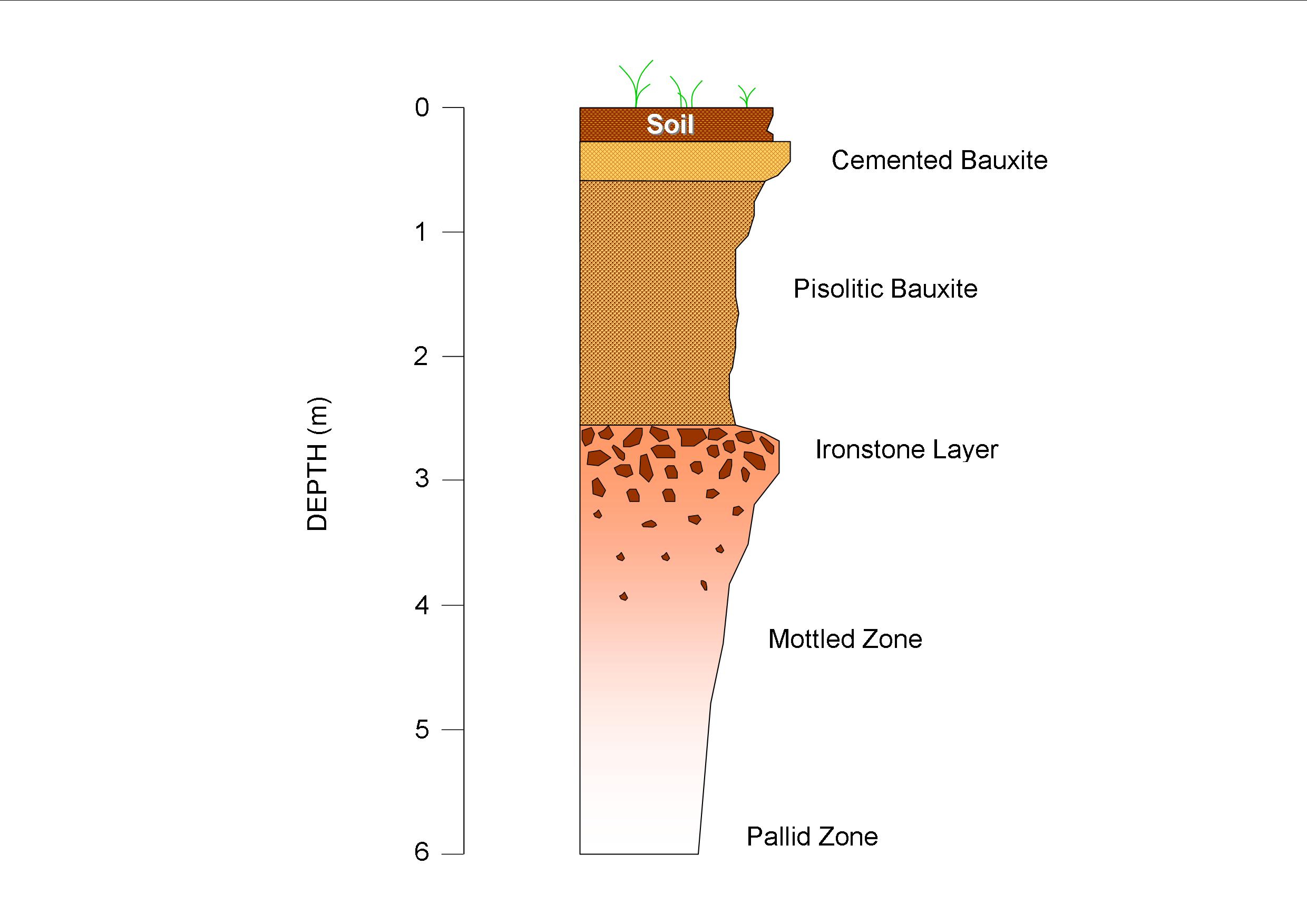In VMS mine environments one of the most basic exploration techniques is to follow the high grades. In deposits like this, the metal compositions can vary significantly and “lenses” of higher grade ore can be identified through careful drill-hole planning.
[box type=”info” align=”aligncenter” ]Disclaimer: This is an editorial review of a public mining company press release and is not an endorsement. It may include opinions or points of view that may not be shared by the companies mentioned in the release. The editorial comments are highlighted so as to be easily separated from the release text and portions of the release not affecting this review may be deleted. [/box]
VANCOUVER, BRITISH COLUMBIA–(Marketwired – Oct. 21, 2014) – Canadian Zinc Corporation (TSX:CZN) (OTCQB:CZICF) (“the Company” or “Canadian Zinc”) is pleased to provide an update on the 2014 summer diamond drill program on its wholly-owned Long Lake copper-lead-zinc-silver-gold volcanogenic massive sulphide (“VMS”) project in central Newfoundland.
[box type=”note” align=”aligncenter” ]
I don’t think we’ve talked about Canadian Zinc before, but we have talked a few times about the positive economic outlook for zinc over the past year. The outlook is still good. In fact, while gold and silver prices have been volatile and trending down over the past year, base metals have been relatively stable and zinc prices are about 15% up. Canadian Zinc has two main project areas: The Prairie Creek Mine in the Northwest Territories and their Central Newfoundland Properties. Both project areas feature poly-metallic base and precious metal resources with zinc, copper, lead and silver but despite that similarity, the geology of the respective project areas are quite different.
The release deals with recent drilling on the Long Lake copper-lead-zinc-silver-gold volcanogenic massive sulphide (“VMS”) project in Newfoundland. All of the Newfoundland project feature VMS-style mineralization similar to what one might find in HudBay’s Flin Flon area projects or the Xstrata’s Kidd Mine. VMS mineralization is formed through deposition of metals from metal-rich hydrothermal fluids around volcanically active sea-floor vents. The metals occur in sulfide minerals like sphalerite (zinc sulfide), galena (lead sulfide) and chalcopyrite (copper-iron sulfide) along with iron sulfide minerals such as pyrite and pyrrhotite.
[/box]
The 2014 drilling program at the Long Lake project was successful in extending the copper-lead-zinc massive sulphide mineralization of the Long Lake deposit both up- and down-dip and along strike. Highlights include:
- Drillhole LL14-50 intersected 25.50% zinc, 5.90% lead, 1.29% copper, 189.7 g/t silver and 1.87 g/t gold over 1.20 metres (core length) from 42.2 to 43.4 metres downhole.
- Drillhole LL14-51 intersected 10.81% zinc, 1.99% lead, 1.59% copper, 86.95 g/t silver and 1.39 g/t gold over 2.25 metres (core length) at 175 metres below surface.
- Drillhole LL14-52 intersected 19.56% zinc, 6.59% lead, 1.29% copper, 131.42 g/t silver and 1.85 g/t gold over 1.10 metres (core length) 75 metres down-dip of LL14-51.
A total of 11 drillholes (2,712 metres) was completed at the Long Lake Main Zone VMS deposit. The Main Zone deposit is a steep, north dipping, barite-rich horizon of semi-massive to massive sulphides consisting of pyrite, sphalerite, chalcopyrite, and galena mineralization. The sulphides are underlain by altered felsic volcanic rocks (footwall) with disseminated to stringer pyrite with base metals. Ten of the eleven drill holes intersected the mineralized horizon between approximately 50 and 350 metres vertical depth.
[box type=”note” align=”aligncenter” ]
The company mentions that the sulfides are associated with a “barite-rich” horizon. Barite (Barium Sulfate) is a non-metallic mineral that can be associated with VMS mineralization in some areas, but also occurs in other environments. In base metal mines barite is considered to be “gangue” or waste rock since it is of insufficient quantity and purity to mine, but purer sedimentary barite may be mined directly. It is primarily used as an additive to drilling “mud” in oil and gas exploration since it is very heavy and can counteract subsurface pressure to help prevent well blow-outs.
In areas where barite is associated with VMS mineralization it’s identification can be a useful prospecting and exploration tool. Its high density may also help VMS-style targets contrast in gravity surveys.
[/box]
The Long Lake Main Zone deposit comprises an Indicated Mineral Resource of 0.48 million tonnes grading 7.8% zinc, 1.6% lead, 0.97% copper, 49 g/t silver and 0.57 g/t gold plus an additional Inferred Mineral Resource of 78,000 tonnes grading 5.7% zinc, 1.2% lead, 0.7% copper, 34 g/t silver and 0.48 g/t gold (SRK, 2012).
“The 2014 drill program has successfully extended the mineralized horizon in all directions. The high grade Long Lake Main Zone deposit is hosted in a highly attenuated, altered felsic volcanic sequence that is interpreted to occur along the north limb of a tight fold structure. The potential for structural thickening of the mineralization in the fold hinges and repetition of the deposit horizon in the south limb is considered to be excellent”, said Michael Vande Guchte, Vice President, Canadian Zinc.
Drillholes LL14-44 to LL14-46 targeted the eastern extension to the Main Zone at depths of 110 to 200 metres below surface. Semi-massive mineralization intersected in the three drillholes appears to increase with depth (LL14-46). The Main Zone remains open along strike to the east and at depth.
Drillholes LL14-48 and LL14-49, located approximately 180 metres apart, targeted the down-dip extension to the Main Zone deposit at 350 metre vertical depth. Both drill holes intersect the Main Zone mineralization at depth, which appears to thicken in the more western drillhole (LL14-49). The deposit remains open down-dip.
Drillholes LL14-47 and LL14-50, located 150 metres apart, targeted the up-dip extension to the Main Zone deposit at approximately 50 metres vertical depth. Both drill holes intersect the Main Zone mineralization with significantly higher grades in LL14-50. The deposit remains open up-dip.
Drillholes LL14-51 to LL14-53 targeted the western extension to the Main Zone deposit at depths of 110 to 200 metres below surface. Semi-massive to massive sulphides were intersected in all three drillholes and show a marked increase in copper-lead-zinc-silver and gold grades to the west and to depth (LL14-52). The deposit remains open along strike to the west and to depth.
Drillhole LL14-54, sited approximately 300 metres west of the Main Zone deposit, was drilled as a step out testing for the western extension to the Main Zone. The presence of a north-northeast trending fault appears to have displaced the mineralization to the north.
[box type=”note” align=”aligncenter” ]
The company has identified from this diamond drilling that grades increase towards the west and with depth. This will be useful for follow-up drill programs. In VMS mine environments one of the most basic exploration techniques is to follow the high grades. In deposits like this, the metal compositions can vary significantly and “lenses” of higher grade ore can be identified through careful drill-hole planning.
[/box]
| Hole ID | Section | From (m |
) | To (m |
) | Length* (m |
) | Cu (% |
) | Pb (% |
) | Zn (% |
) | Ag (g/t |
) | Au (g/t |
) | |
| LL14-44 | 9150E | 157.80 | 161.80 | 4.00 | 0.15 | 0.07 | 2.09 | 2.50 | 0.10 | |||||||||
| LL14-45 | 9150E | 117.50 | 130.15 | 12.65 | 0.07 | 0.07 | 1.04 | 2.88 | 0.08 | |||||||||
| includes | 127.50 | 130.15 | 2.65 | 0.07 | 0.20 | 1.18 | 5.94 | 0.14 | ||||||||||
| LL14-46 | 9150E | 130.15 | 131.15 | 1.00 | 0.36 | 0.40 | 2.65 | 6.60 | 0.47 | |||||||||
| includes | 205.50 | 207.00 | 1.50 | 0.22 | 1.54 | 3.83 | 32.03 | 0.61 | ||||||||||
| LL14-47 | 9050E | 80.70 | 81.20 | 0.50 | 0.57 | 0.06 | 5.02 | 20.50 | 0.30 | |||||||||
| LL14-48 | 9100E | 426.00 | 429.00 | 3.00 | 1.49 | 0.00 | 2.02 | 10.97 | 0.66 | |||||||||
| LL14-49 | 8950E | 392.10 | 403.10 | 11.00 | 0.23 | 0.26 | 1.85 | 4.11 | 0.23 | |||||||||
| includes | 392.10 | 396.10 | 4.00 | 0.35 | 0.46 | 2.42 | 4.49 | 0.24 | ||||||||||
| 396.10 | 396.60 | 0.50 | 0.85 | 1.26 | 9.50 | 9.60 | 0.71 | |||||||||||
| LL14-50 | 8950E | 42.20 | 43.40 | 1.20 | 1.29 | 5.90 | 25.50 | 189.70 | 1.87 | |||||||||
| LL14-51 | 8850E | 180.06 | 182.31 | 2.25 | 1.59 | 1.99 | 10.81 | 86.95 | 1.39 | |||||||||
| LL14-52 | 8850E | 212.72 | 213.82 | 1.10 | 1.29 | 6.59 | 19.56 | 131.42 | 1.85 | |||||||||
| LL14-53 | 8850E | 132.35 | 133.82 | 1.47 | 0.11 | 0.82 | 2.26 | 8.90 | 0.04 | |||||||||
| LL14-54 | 8600E | No significant assays | ||||||||||||||||
* All intervals are core length; true thickness estimated to be 65% of core length
[box type=”note” align=”aligncenter” ]
The company reports that the holes were designed to extend their “main zone” at Long Lake, but at this point it’s not clear how these new holes fit into the big picture. Given the structural complexity of this deposit, it will likely take some time for the the company to update their maps and theories and reconcile past interpretations to what was actually found in the ground.
Note that the intervals are reported as apparent widths and true widths are estimated.
[/box]
The Long Lake project is one of three major VMS projects, each with defined deposits, being explored by Canadian Zinc on its extensive land package in central Newfoundland. In the summer 2014 program 28 drillholes with a total of 8,000 metres have been completed at the Tulks South and Long Lake projects.
Thirteen drillholes (4,060 metres) tested the Boomerang-Domino deposits and Baxter Pond alteration zone at Tulks South (see news release dated September 11, 2014). Eleven holes (2,712 metres), reported in this news release, were drilled on Long Lake. Four drillholes (1,377 metres) were recently completed on the Tulks East deposit at (Tulks South) and assay results are pending.
The drill has been moved to the South Tally Pond VMS project where a 1,500 metre drill program will be completed to further evaluate the Northwest zone at the Lemarchant deposit. Drilling is expected to be completed by mid-November.
Canadian Zinc is incorporating the new data from the successful 2014 drill programs at Tulks South and Long Lake projects into their respective geological models and planning for follow-up programs in 2015. Future drilling will continue to target the expansion of the Boomerang-Domino deposit, the Tulks East deposit and the Long Lake Main Zone deposit, all of which remain open, and the surrounding priority target areas.
Canadian Zinc and its 100%-owned subsidiary, Messina Minerals Inc., would like to recognize the Government of Newfoundland and Labrador for its continued support of the Tulks South project through a financial contribution from the Government’s Junior Exploration Assistance Program.
[box type=”note” align=”aligncenter” ]
Note that the company is reporting financial support from the Newfoundland government in exploration. In many jurisdictions, matching funds or grants may available in order to encourage mineral exploration. Regions that do not support the industry or make it difficult for companies to operate may find those companies and their investments leaving for greener pastures. Balancing incentives and costs can be a difficult balancing act for governments, but the right program can make a big difference to junior explorers looking for their next opportunity. It can also make a big difference for investors who are more likely to shy away from projects in jurisdictions that appear unstable or unfriendly.
[/box]
About Canadian Zinc
Canadian Zinc is a TSX-listed exploration and development company trading under the symbol “CZN”. The Company’s key project is the 100%-owned Prairie Creek Project, a fully permitted, advanced-staged zinc-lead-silver property, located in the Northwest Territories.
Canadian Zinc also owns an extensive land package in central Newfoundland that it is exploring for copper-lead-zinc-silver-gold deposits. Key projects include:
South Tally Pond project – Lemarchant deposit; Indicated Mineral Resource of 1.24 million tonnes grading 5.38% zinc, 0.58% copper, 1.19% lead, 1.01 g/t gold and 59.17 g/t silver plus an additional Inferred Mineral Resource of 1.34 million tonnes grading 3.70% zinc, 0.41% copper, 0.86% lead, 1.00 g/t gold and 50.41 g/t silver (Giroux Consultants 2012);
Tulks South project – Boomerang-Domino deposit: Indicated Mineral Resource of 1.36 million tonnes grading 7.1% zinc, 3.0% lead, 0.5% copper, 110 g/t silver and 1.7 g/t gold plus an additional Inferred Mineral Resource of 0.69 million tonnes grading 6.5% zinc, 2.8% lead, 0.4% copper, 95 g/t silver and 1.0 g/t gold (Snowdon 2007); and
Long Lake project – Long Lake deposit: Indicated Mineral Resource of 0.48 million tonnes grading 7.8% zinc, 1.6% lead, 0.97% copper, 49 g/t silver and 0.57 g/t gold plus an additional Inferred Mineral Resource of 78,000 tonnes grading 5.7% zinc, 1.2% lead, 0.7% copper, 34 g/t silver and 0.48 g/t gold (SRK, 2012).
The Company’s exploration strategy in Newfoundland is to continue to build on its existing polymetallic resource base with the aim of developing either a single deposit, similar to the past-producing mine at Buchans or the Duck Pond mine, or a number of smaller deposits that could be processed in a central milling facility.
Quality Assurance and Quality Control
Drillhole intervals are core length with true thickness estimated to be 65% of core length. Samples were analyzed for Cu, Pb, Zn, Ag and Au at Eastern Analytical Labs in Springdale, NL from sawn NQ-sized half core sections. Data quality is monitored through the insertion of control samples consisting of one prepared base and precious metal standard and one blank sample for every 20 samples of drill core. All control samples conformed to the accepted contained grades of base and precious metals. Select samples pulps were shipped to ALS Chemex in North Vancouver, BC for 33-element ICP analysis for further check assays of significant base and precious metal bearing samples.
[box type=”note” align=”aligncenter” ]
Proper quality assurance practices are an absolute necessity for larger and small mining companies. We explain QA/QC here.
Canadian Zinc is currently trading at $0.24.
[/box]
Michael J. Vande Guchte, P.Geo., Vice President Canadian Zinc Corporation, is responsible for the Tulks South and Long Lake exploration programs, and is a Qualified Person as defined by NI 43-101 and has reviewed and has approved the contents of this news release.
[box type=”success” align=”aligncenter” ]Have a company or release you’d like us to look at? Let us know though our contact page, through Google+, Twitter or Facebook.[/box]






